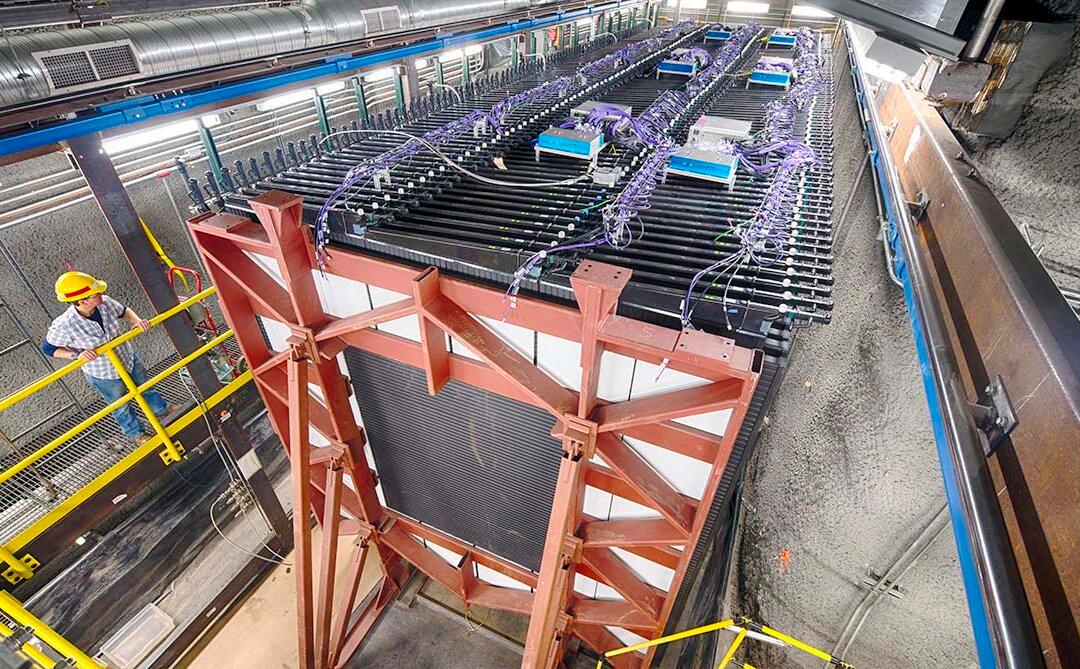The 260 members of the NOvA Neutrino Experiment recently reported their initial findings in two papers. The team is trying get a clearer picture of the role neutrinos, mysterious subatomic particles, played in the evolution of the cosmos.
The first paper, in Physical Review Letters, describes the first appearance of electron neutrinos in the NOvA experiment. A second paper, in Physical Review D, describes the disappearance of muon neutrinos in the experiment.

This is the telltale track of an electron neutrino in the NOvA Neutrino Experiment's Far Detector. NOvA collaboration




